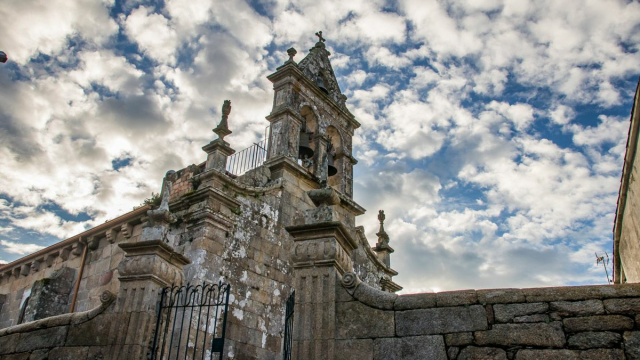Concello de Barbadás

SOBRADO-BENTRACES-LOIRO ROUTE
Linear route of history and nature to get to know some of the most important heritage elements of the three neighbouring towns of Sobrado do Bispo, Bentraces and Loiro. We have the option of starting at the chapel of San Xoán in Sobrado do Bispo or at the group of granaries in Loiro. In this pleasant walk we will visit its surprising and unique historic centres, enjoying its Romanesque churches, charming squares, streets, pazos, crosses and a beautiful rural landscape where oak groves alternate with fields of crops. The route is linear and offers several options: return along the same itinerary, using two vehicles or returning along the Camino de San Rosendo. - It is not signposted, it is recommended to use a map or the guide's track. ELEMENTS OF INTEREST: In Sobrado do Bispo, the Chapel of San Xoán, the Romanesque Church of Santa María and the Pazo da Mitra stand out, together with the popular architecture in the neighbourhood of A Eirexa. In Bentraces, its historic quarter stands out with the Rúa dos Fornos, the Praza do Pomar and the Church of San Bieito, as well as the 15th century Pazo de Bentraces. On the other hand, in Loiro we find the Romanesque Church of San Martiño (12th century), the Ethnographic Museum, the Cruceiro de Loiro, the Rúa da Quinta and an interesting group of granaries, which reflect the rich cultural and historical heritage of these towns. COMPLEMENTARY ACTIVITIES: The Tangaraño is a gigantic granite block containing water in one of its cavities to which legend attributes curative properties for skin diseases. The Castro de Trelle, an important castrexo settlement, offers a wide visual domain of the Miño and Arnoia valleys, with two enclosures in oval terraces. The Hermitage of San Benito de Cova do Lobo, with a modern chapel and a privileged location, is famous for the pilgrimage on 11th July, inspired by the legend of San Benito. In the Castro and Monte de Louredo, among mixed forests, we find Neolithic remains and impressive views over the Miño Valley, combining history and nature.



















